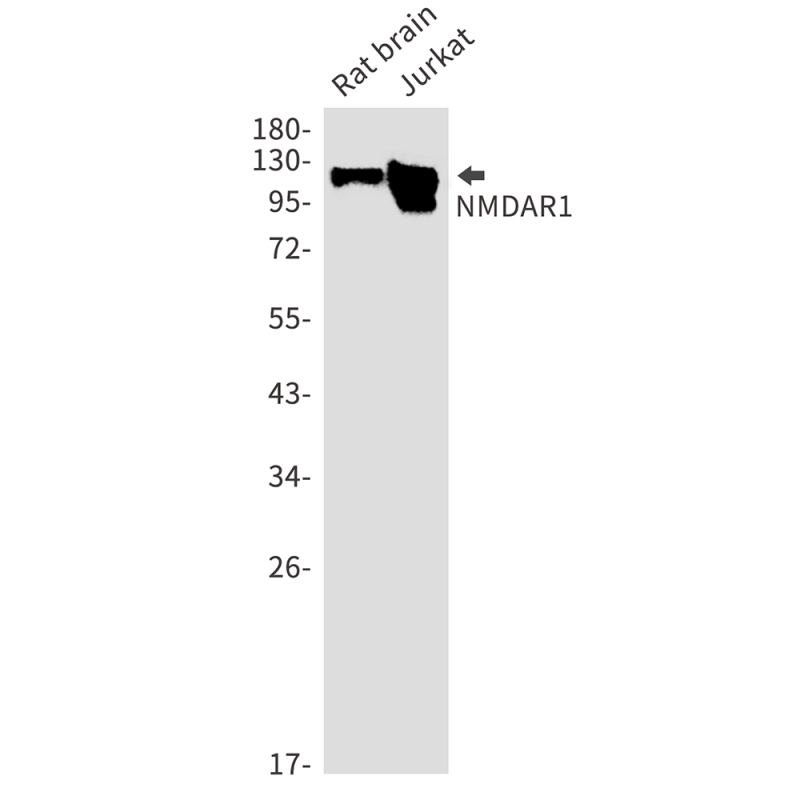
| WB | 1/500-1/1000 | Human,Mouse,Rat |
| IF | 咨询技术 | Human,Mouse,Rat |
| IHC | 咨询技术 | Human,Mouse,Rat |
| ICC | 技术咨询 | Human,Mouse,Rat |
| FCM | 咨询技术 | Human,Mouse,Rat |
| Elisa | 咨询技术 | Human,Mouse,Rat |
| Aliases | GRIN1; NMDAR1; Glutamate [NMDA] receptor subunit zeta-1; N-methyl-D-aspartate receptor subunit NR1; NMD-R1 |
| Entrez GeneID | 2902 |
| WB Predicted band size | Calculated MW: 105 kDa; Observed MW: 120 kDa |
| Host/Isotype | Rabbit IgG |
| Antibody Type | Primary antibody |
| Storage | Store at 4°C short term. Aliquot and store at -20°C long term. Avoid freeze/thaw cycles. |
| Species Reactivity | Human,Mouse,Rat |
| Immunogen | A synthetic peptide of human NMDAR1 |
| Formulation | Purified antibody in TBS with 0.05% sodium azide,0.05%BSA and 50% glycerol. |
+ +
NMDAR1 antibodies target the NR1 subunit of the N-methyl-D-aspartate receptor (NMDAR), a glutamate-activated ion channel critical for synaptic plasticity, learning, and memory. These autoantibodies are most notably linked to anti-NMDAR encephalitis, an autoimmune disorder first described in 2007. The condition often arises due to cross-reactivity between antibodies against ovarian teratomas (in young females) or other tumors and neuronal NMDARs, though many cases are idiopathic.
Pathologically, NMDAR1 antibodies cause internalization of NMDARs, disrupting glutamatergic signaling. This leads to neuropsychiatric symptoms such as psychosis, seizures, memory deficits, autonomic instability, and movement disorders. Diagnosis relies on detecting IgG antibodies in cerebrospinal fluid (CSF) or serum using cell-based assays. Early recognition is crucial, as delayed treatment correlates with poor outcomes.
Treatment involves immunotherapy (steroids, IVIG, plasma exchange, rituximab) and tumor removal if present. Most patients recover partially or fully with prompt therapy, but residual cognitive or behavioral deficits may persist. Research continues to explore antibody pathogenicity, genetic susceptibility (e.g., GRIN1 gene variants), and novel biomarkers. NMDAR1 antibodies have also been studied in psychiatric disorders like schizophrenia, though their role remains controversial. Improved detection methods and clinical awareness have increased diagnosis rates, making this once-rare condition a recognized cause of autoimmune encephalitis worldwide.
×